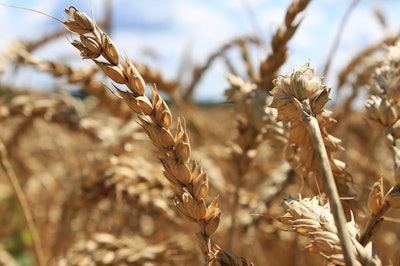
As many of you are aware, the main focus of my blog is debunking pet food myths and misconceptions that may have started out as folklore, erroneous interpretation of data or confused consumers seeking advice from blogs of people with no veterinary or nutritional background claiming to be superheroes, and looking to break down the conspiracies of big pet food companies and the government. Although some of my blog posts may have started some healthy debates, I think we can all agree my opinions were backed by peer-reviewed science, not anecdotal evidence or marketing.
So when Bob Bamberg (@bobbamberg) wrote in with a question, I felt obligated to answer with a blog post, since it had multiple components that needed to be addressed. Bob wrote, “I would like to know if grains such as corn, soy, sorghum, wheat, etc. in dog and cat food do actually affect digestibility and skin/coat quality as many pet food reps preach.”
Where’s the poop?
For those of you who own dogs, you can relate to this question. Do you recall the time (or many times) when you arrived home and your dog looked guilty when you came in the front door? Then you would ask them, where is the poop (or did you raid the trash can)?
At this moment you are probably asking, how does this relate to Bob’s question? Well, the analogy I used is no different than anyone who walks into a pet store and/or veterinary clinic. If someone walks into your store and you do not believe what they are preaching or feel something is not right, then you should ask them: Where is the poop, aka data?
Carbohydrate digestibility does not impact skin and coat
Now back to Bob’s original question and scientific data to support the answers. Carbohydrate digestibility does not impact skin and coat. As previously discussed in my last blog post (Why grain-free pet food isn’t better and carbs are good), those sources of carbohydrates you mentioned all have a high starch digestibility (if extruded) when you look at the individual components alone.
However, to truly understand if digestibility will potentially impact the skin and coat of a dog or cat, you should look at the actual digestibility of the complete food. Since the carbohydrate sources are not the only ingredients in your food, you will need to look at protein sources, ash levels, fiber levels, processing conditions, etc. and their impact on digestibility as a whole.
Most pet food companies running digestibility studies will acquire data for dry matter (total feces produced), crude protein, crude fat, carbohydrate (calculated) and digestible energy. Of these nutrients, crude fat will be your best indicator to determine if digestibility will impact an animal’s skin and coat. On the whole, it is very difficult to reduce crude fat digestibility in dog and cat foods. Kienzle et al. (2001) investigated the impact of crude fiber on digestibility of fat. When they fed foods containing 7, 15 and 20 percent crude fiber, there was no impact on fat digestibility (all > 98 percent). This is why weight management foods are reduced or low in fat.
Gluten sensitivity is rare
Lastly, there are only two breeds with gluten sensitivity (digestive issues and other symptoms) confirmed by peer-reviewed scientific data: Irish Setter and Border Terrier (Roudebush and Schoenherr, 2010; Lowrie et al., 2016). Digestibility and bioavailability of crude fat could be altered; but, gluten sensitivity is rare (ask your local veterinarian). However, individual dogs may vary, so consumers should consult their veterinarian in case their dog or cat needs adjunctive therapy or there may be other underlying issues.
Food allergies are not as prevalent as you may think
Finally, you may have been told that dogs are allergic to certain carbohydrates. Identifying and confirming specific ingredients is typically a long process involving elimination diets and reintroduction to individual potential allergens. The reason for the reintroduction to individual allergens is to identify the single (or multiple) ingredients. For dogs, commonly associated allergens include beef, dairy, wheat, lamb, chicken egg, chicken and soy. For cats, the allergens are beef, dairy products and fish (Roudebush et al. 2010).
Additionally, Olivry and Mueller (2016) found that on average, 1 to 2 percent of cats and dogs actually have cutaneous adverse reactions to food. Again, if you suspect any food allergies or sensitivities, make sure your consumer consults a veterinarian since there could be other underlying issues.
It is about the essential fatty acids
Generally speaking, the most important nutrients for skin and coat are essential fatty acids. These are linoleic acid, alpha-linolenic acid and arachidonic acid (cats only). Proper water barrier function of the skin is dependent on the content of linoleic acid. When levels of linoleic acid fall below an animal’s requirement, the result is dry scaly skin, assuming there are no other underlying issues (NRC, 2006). Remember when dogs and cats would have dry or dull coats and the remedy was a tablespoon or two of vegetable oil? That remedy generally worked because corn oil and soy oil are great sources of linoleic acid.
What are omega-3 and omega-6 fatty acids?
Additionally, pet food companies will talk about omega-3 and omega-6 fatty acids. In terms of guarantees or other label claims, they are no longer focusing on individual fatty acids. In general, they focus on two classes of polyunsaturated fatty acids and their potential benefits.
The omega-3 fatty acids include alpha-linolenic acid, eicosapentaenoic acid (EPA) and docosahexaenoic acid (DHA). The omega-6 fatty acids include linoleic acid and arachidonic acid. Depending on the animal’s nutritional needs (lifestage, mobility, skin and coat issues), the individual fatty acids may be conditionally essential (e.g., DHA for trainability). As a result, the requirement and the ratio will vary, typically < 10:1.
Other nutrients that will impact skin and coat quality include and are not limited to copper, zinc, vitamins A and E, methionine and tyrosine (Roudebush and Schoenherr, 2010); however, most foods that are properly formulated and meet AAFCO standards should not have issues meeting the animal’s requirements.
Thanks, Bob
Bob, I hope this addresses your questions. When in doubt, ask: Where’s the data? If they don’t provide it or if you feel they are not giving you the full truth, then they are not likely a reliable source for you and your customer. Thanks for writing in and asking for clarification.
Next topic: Animal, plant and by-products as protein sources
Next time we will discuss this topic: “Animal, plant and by-products as protein sources.” If there are topics you would like to have discussed, feel free to comment below or reach out via LinkedIn: www.linkedin.com/in/ryanyamka.
References
Kienzle et al., 2001. Effect of cellulose on the digestibility of high starch versus high fat diets in dogs. J Anim Physiol Anim Nutr). 85:174-85.
Lowrie et al., 2016. A presumptive case of gluten sensitivity in a border terrier: a multisystem disorder? Vet Rec. 179:573
NRC, 2006. Fat and Fatty Acids: In Nutrient Requirements of Dogs and Cats. Natl. Acad. Press, Washington, DC p. 81–110.
Olivry and Mueller, 016. Critically appraised topic on adverse food reactions of companion animals (3): prevalence of cutaneous adverse food reactions in dogs and cats. BMC Vet Res. 13: 51.
Roudebush et al., 2010. Adverse Reactions to Food: In Small Animal Clinical Nutrition, 5th Edition. Topeka, Kansas: Mark Morris Institute, p. 609-636.
Roudebush and Schoenherr, 2010. Skin and Hair Disorders: In Small Animal Clinical Nutrition, 5th Edition. Topeka, Kansas: Mark Morris Institute, p. 637-665.


















